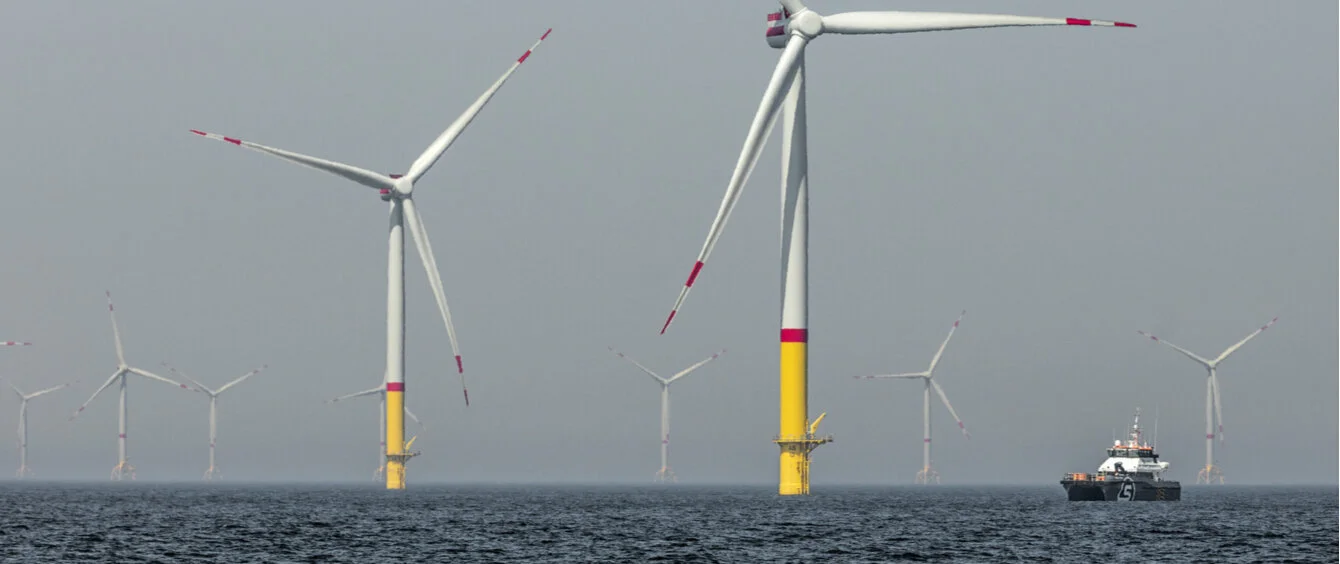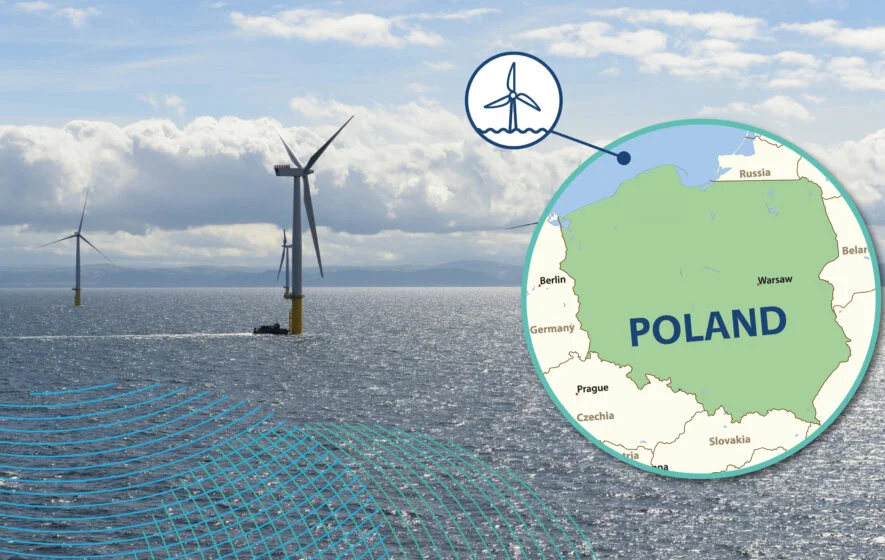Strong, steady winds over calm, shallow tides – just what the doctor ordered to generate wind power at sea – and the Baltic Sea has it in spades. Despite a recent survey by European industry association WindEurope showing that only 2 GW of the 20 GW of offshore wind capacity currently installed in European waters is located in the Baltic Sea, by 2030 this figure could rise to as much as 9 GW. The right governmental initiative could see this figure even increase to above 14 GW.
And Poland is apparently hell-bent on contributing a considerable proportion of this capacity. According to numerous studies, the country could soon be generating ten or even twelve GW of offshore electricity using technology that is already available today. The nation is looking to harness this potential in order to give its power supply a sustainable foundation.
In order to meet its international climate commitments, Poland must ensure that renewables account for at least 35 percent of its electricity consumption by 2030. According to figures from the national statistics authority, in 2018 the renewables share was at a mere eleven percent.
Building new generation capacity
If the country wants to avoid becoming dependent on sizeable electricity imports in the medium term, the development of new generation capacity seems inevitable even now: According to a study conducted by the Polish think tank Forum Energii, Poland’s capacity requirements will increase significantly by the middle of the century: from 43 GW in 2017 to at least 60 GW. At the same time, plants contributing around 14 GW would be decommissioned by the mid-2030s; i.e. mainly coal-fired power stations reaching the end of their service life.
It would seem as though Poland is intent on using wind power from the Baltic Sea to account for a considerable proportion of the necessary additional capacity. All in all, there are 13 offshore wind projects underway, reports the Dutch industry portal OffshoreWIND.biz. As such, 10 GW of generation capacity will be installed by 2040. With high capacity utilisation, this means that up to 25 percent of Poland’s electricity could be accounted for, says the portal.
The race is on
According to the business development agency GTAI (in German), two projects of the joint venture between the Polish energy company Polenergia and Equinor have progressed the most, and in 2018, the Norwegian state-owned group had already secured a 50 percent share of each of the wind farms, Baltyk II and III. At the end of 2019, both companies announced that they also intend to collaborate on the development of Baltyk I. All projects together have total capacity of 3 GW. Power is expected to be generated from 2025.
Poland’s largest energy company, PGE, also intends to harness wind power in the Baltic Sea in due course. According company statements, PGE is set on starting construction of a 1 GW farm in 2023, which is scheduled to go online in 2026. An additional 1.5 GW should also be installed by 2030.
In October 2018, the company, together with industry leader Orsted, announced that talks were underway to discuss a 50% stake for the Danes in each of the two projects. Orsted is the world’s largest operator of offshore wind farms with an installed capacity of 7.45 GW across North America, Asia and Europe.
RWE involved in the Baltic Sea
Offshore wind’s new number two has also joined the fray in Poland: In November, RWE Renewables acquired licences for four offshore projects having a total capacity of 1.5 GW. These ventures, which are all at different stages of development, are located on the Slupsk sandbank in the central Polish Baltic Sea region. Development activities are well underway and will be ongoing over the next few years with the aim of starting construction as early as 2023.
Since the asset swap with E.ON in October 2019, the newly founded RWE subsidiary has operated offshore plants with an installed capacity of 2.5 GW. But the business is by no means the new kid on the block when it comes to the Baltic Sea region: Since 2019, the Arkona wind farm, the largest offshore wind farm in the Baltic Sea to date, has been supplying up to 400,000 households with renewable energy. Arkona is located 35 kilometres north-east of Rügen and is not far from the Polish Exclusive Economic Zone.

